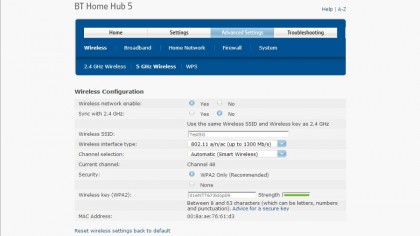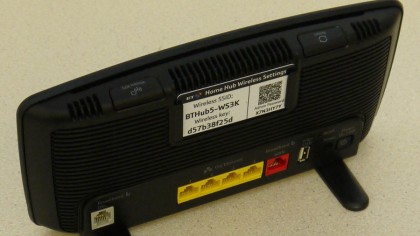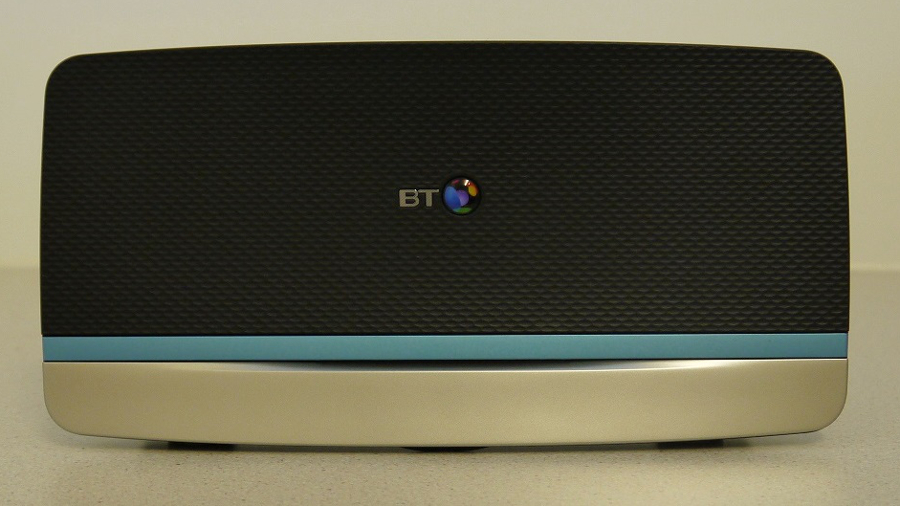Why you can trust TechRadar
There's no CD-ROM in the Home Hub box. You just plug it in and connect to it from a browser either via a cabled port or wirelessly using WPS or the SSID and password printed on a card located in a plastic holder on the back. A wizard starts up as soon as you do this and quickly takes your through the short setup process.
This all took just a couple of minutes although we did have to go back and make a few changes to get the setup we wanted. For example, the same SSID and security credentials are assigned to both the 2.4GHz and 5GHz wavebands, making it hard to know which you've connected to. Moreover, there's no band-steering as on some more expensive wireless products so we assigned different SSIDs and passwords to each waveband to ensure we connected to the one we wanted.

We also fine-tuned the DHCP address range employed by the router and turned off the so-called Smart Setup option which, when a new client connects, runs an annoying setup wizard to configure a variety of BT options, such as parental controls. This we did via the very straightforward management interface which, although lacking in functionality compared to some, covers all the important bases and is very easy to use. Our only niggle was the need to continually navigate to the "advanced" options to get to the tools we wanted to tweak.
Impressive performer
In terms of performance the VDSL modem gave the same broadband speeds as when using the OpenReach modem and, used over a period of weeks, delivered a steady connection with no dropouts. It was also a lot quicker at establishing the connection compared to the external modem.
Wireless throughput was also impressive. Interestingly 802.11n signal range and quality was lower at 5GHz compared to the 2.4GHz waveband but that didn't affect the speed. Using a Core i5 desktop with on-board 802.11n Wi-Fi we saw real-world transfer rates of up to 200Mbps using the 5GHz band and 90Mbps using the 2.4GHz airwaves. These figures were achieved close to the router and dropped to around 80Mbps and 30Mbps respectively at a distance of 25 metres.

For our 802.11ac tests we used an Intel Dual Band Wireless-AC 7260 Network Adaptor fitted inside a Core i5 Intel NUC. Using this 2x2 adapter throughput rose to around 250Mbps when close to the router and just over 130Mbps at 25 metres. That's not the fastest possible with 802.11ac but impressive nonetheless, and very easy to configure thanks to built-in WPS support on the Home Hub.
Sign up to the TechRadar Pro newsletter to get all the top news, opinion, features and guidance your business needs to succeed!
